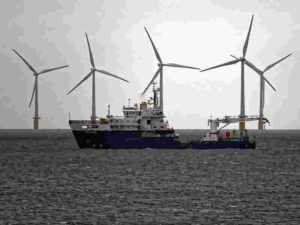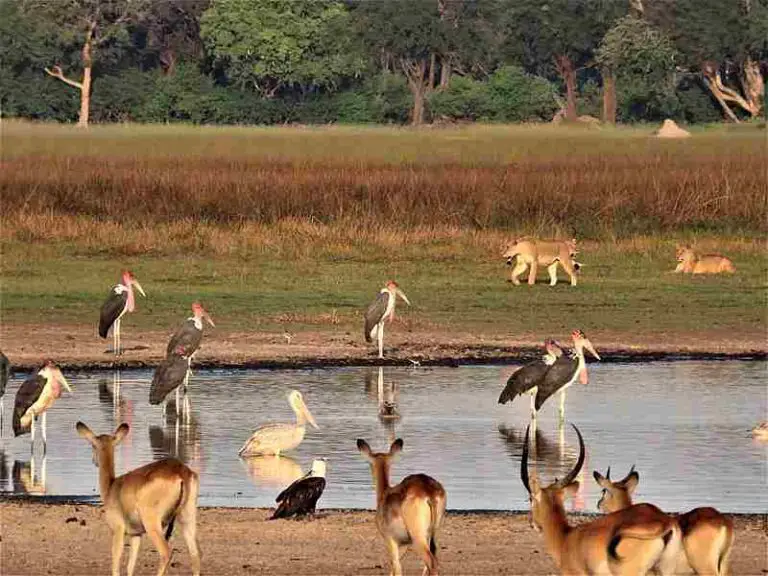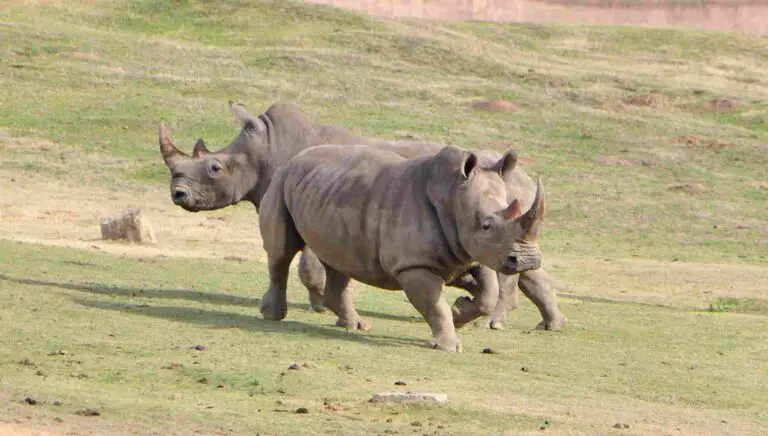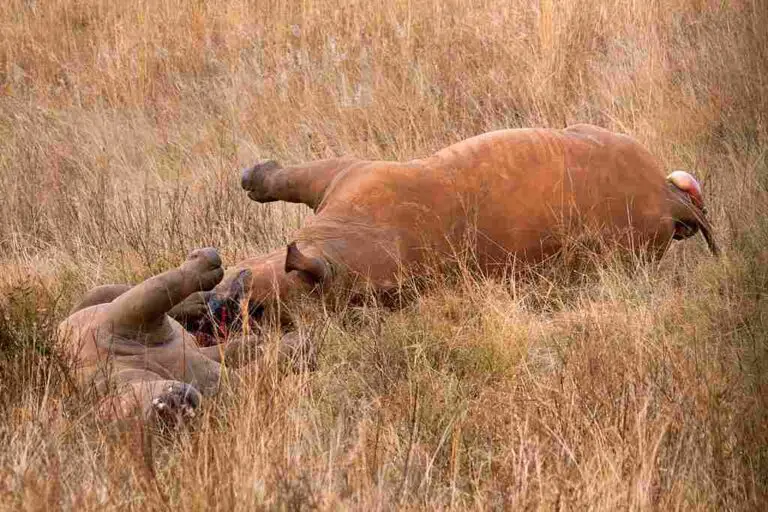9 Disadvantages of Wind Energy Explained
Disadvantages of wind energy are; noise pollution, inconsistency, unpredictability, aesthetic inconvenience, high capital cost, biodiversity threat, marine hazard risk, scale and location challenges, environmental degradation, and low cost-competition.
This article discusses the disadvantages of wind energy as follows;
1). Noise Pollution (as one of the Disadvantages of Wind Energy)
Noise pollution is a major disadvantage of wind energy. It is also one of the causes of negative public reception and limited use of wind turbines [7].
There are several moveable components of a wind turbine that are set into motion as the system captures and converts wind energy. They include rotor blades, gear box, and generator, among other parts.
The locomotion of these movable parts usually results in significant noise emission that can be effective over long distances within the vicinity of the turbine.
Turbine noise intensity depends on factors like the proximity of the turbine to residential areas, the size or scale of the turbine, the design of the turbine, and the magnitude of wind energy that is available.
Generally, turbine noises reduce their usability in urban areas, as they may disturb residential dwellers and commercial outlets.
Noise pollution is one of the disadvantages of wind energy that are being addressed already.
As part of innovative measures to achieve sustainable development, modern wind turbine designs are made to minimize noise while maximizing efficiency [5].
2). Inconsistency and Unpredictability (as one of the Disadvantages of Wind Energy)
In addition to the challenge of noise pollution, inconsistency is another challenge of wind energy development or usage.
Wind energy is renewable and sustainable, however, it is not consistent and cannot be easily predicted and measured.
This problem implies that wind energy is not the best option for sustainability of electricity generation in a circular economy.
The inconsistency of wind energy supply means that it is unreliable compared to alternatives like nuclear energy and fossil fuels. When we generate electricity from wind, the power that is produced cannot be relied upon for industrial purposes like manufacturing and for sustainable farming activities like food processing.
As a result, it is not a productive approach to rely solely on wind for power supply. This is in spite of the fact that electricity generation is one of the uses of wind energy. Rather, wind energy is better as as supportive source of energy, to be used in collaboration with solar, geothermal, fossil fuel and other types of energy.
Also, wind energy requires auxiliary equipment like energy management systems and deep cycle batteries, for energy conservation, storage and efficiency.
3). Aesthetic Inconvenience
One of the disadvantages of wind energy is its unfavorable aesthetic effects.
The capacity of a wind turbine is generally proportional to the scale of the blades, nacelle and tower. As a result, large turbines are common.
When such large structures are built to generate electricity from wind, they impair the visual serenity and homogeneity of the natural landscape or countryside.
Also, wind turbines tend to have a ‘shadow flicker’ effect when turning [4], such that the blades of the turbine can affect transmission of light within its surroundings.
It is important to note that aesthetic inconvenience is not a major disadvantage of wind energy.
4). Capital Cost (as one of the Disadvantages of Wind Energy)
It is not uncommon for the initial cost of a large wind turbine to be above $1,000,000 [2].
This is a disadvantage, because many potential operators of these turbines are unable to afford the capital required.
Capital cost of wind energy development is determined by factors such as size or scale, equipment required, complexity of the project, components, design, coupling, and land of occupancy.
It can be argued that a significant aspect of this high cost is due to the technological limitations and slow-pace of innovation in the wind energy sector. This is true, because many wind turbines have to be built based on a tailored design, to meet specific needs and circumstances.
The average cost of electricity from wind energy (after installation of the turbine), falls between 1 and 4 cents per kilowatt-hour, which is not expensive. There may also be tax benefits and carbon tax-waivers for users of wind energy.
5). Threat to Biodiversity
It is impossible to discuss the disadvantages of wind energy without mentioning its effects on the ecosystem.
Wind energy development can impact biodiversity in various ways.
One of these ways is through habitat loss [6]. When installing wind turbines and building wind farms, it is often necessary to remove regional vegetation, alter the topography, and displace living organisms from their natural habitat.
This occurs mainly because of the need to install wind turbines in remote areas. Various types of ecosystems including forests and grasslands are susceptible to being affected.
Aside loss of habitat, wind energy can pose a direct threat to the survival of biodiversity due to the risk of accidental collision with wind energy facilities.
Wind turbines are said to be responsible for the deaths of very large numbers of bats and birds each year [8]. These organisms collide with the blades, tower or nacelle of the turbine and are killed by the impact.
Noise pollution from wind energy facilities can also disturb wildlife, causing organisms to migrate and lose their habitat.
Addressing the problem of biodiversity threat, requires effective measures to optimize the design and mode of operation of wind facilities.

6). Marine Hazard Risk (as one of the Disadvantages of Wind Energy)
For offshore wind energy development, there are significant risks involved.
These risks mainly affect health and safety on seas where wind turbines have been installed.
The involved groups are mainly users or navigators of marine routes, and offshore workers [10].
These groups face the risk of collision with wind energy structures, maintenance hazards, risk of electricity-related hazards during the transmission of wind power, and navigation problems due to obstruction by wind energy facilities.
Reducing these risks requires safety equipment, hazard mitigation systems, and careful planning, design, development and maintenance. Such precautionary measures further increase the cost of wind energy development.

Disadvantages of Wind Energy: Marine Hazard Risk (Credit: Acabashi 2017 .CC BY-SA 4.0.)
7). Challenges of Scale and Location
One of the disadvantages of wind energy is that it cannot be harnessed in any location.
Wind turbines are usable and profitable only in locations where wind energy can be accessed in high intensity and regular supply [1].
This excludes urban and sub-urban areas which are relatively congested and do not permit free flow of air currents. However, such areas are in most need of electricity, and have to depend on fossil fuel power plants, nuclear plants, and hydroelectric facilities.
Wind energy is easier to harness in remote areas such as coasts and offshore zones, where strong winds are allowed to flow with minimal obstruction.
The potential hazards that are associated with wind energy facilities also make it difficult to install them in residential areas.
Electricity which is generated by wind turbines in remote locations, must be transmitted to the point(s) of need. In many cases, this requires long-distance power transmission facilities that are expensive.
At the same time, losses of power are inevitable over such long distances, since it is impossible to achieve perfect energy conservation and efficient when transmitting current through a conductor [9].
Lastly, for wind energy usage to be sustainable and economically viable, the scale of wind power systems must be maximized. Small turbines are generally unable to produce any significant output, and must be up-scaled. The use of large turbines, on the other hand; only increases cost, complexity, and risk.
8). Environmental Degradation (as one of the Disadvantages of Wind Energy)
While it is widely agreed that wind energy is ‘clean’, there are some aspects of wind energy development that can lead to environmental degradation.
For example, the manufacture of wind turbines involves activities like ore mining, welding, and fossil fuel combustion.
The process of installing wind turbines often involves activities like deforestation, transport (burning of fossil fuels) and excavation [3].
These activities can lead to greenhouse emissions, global warming, air quality decline, soil degradation, and climate change.
To address such problems, precautionary measures as well as corrective measures like soil restoration and environmental remediation, are necessary. These measures increase the cost of wind energy development.
Also, although wind energy is considered to be an aspect of the circular economic model (since it is renewable) the materials used to manufacture wind turbines are not usually biodegradable, and therefore do not return to the environment after the wind turbine has been decommissioned.
Because these materials do not undergo biodegradation, they can cause pollution when discarded (if they are not recycled).
9). Low Cost-Competition
Wind power is cheap, when the capital cost of turbine installation is excluded.
However, it is arguable that wind energy is not cost-competitive when compared to its alternatives.
This is mainly due to other disadvantages of wind energy, like capital cost, low-reliability, location, scale, ans low output.
It is difficult for wind energy to have an edge over the more-established fossil fuels with higher energy efficiency and consistency, or over the more-reliable, renewable energy alternatives like solar panel–and-battery technologies.
Conclusion
Disadvantages of wind energy are;
- Noise Pollution
- Inconsistency and Unpredictability
- Aesthetic Inconvenience
- Capital Cost
- Threat to Biodiversity
- Marine Hazard Risk
- Challenges of Scale and Location
- Environmental Degradation
- Low Cost-Competition
References
1). Asadi, M.; Pourhossein, K. (2021). “Wind Farm Site Selection Considering Turbulence Intensity.” Energy 236:121480. Available at: https://doi.org/10.1016/j.energy.2021.121480. (Accessed 25 August 2022).
2). Charabi, Y.; Abdul-Wahab, S. (2020). “Wind turbine performance analysis for energy cost minimization.” Renewables Wind Water and Solar 7(1). Available at: https://doi.org/10.1186/s40807-020-00062-7. (Accessed 25 August 2022).
3). Dai, K.; Bergot, A.; Liang, C.; Xiang, W.; Huang, Z. (2015). “Environmental issues associated with wind energy – A review.” Renewable Energy 75:911-921. Available at: https://doi.org/10.1016/j.renene.2014.10.074. (Accessed 25 August 2022).
4). Haac, R.; Darlow, R.; Kaliski, K.; Rand, J.; Hoen, B. (2022). “In the shadow of wind energy: Predicting community exposure and annoyance to wind turbine shadow flicker in the United States.” Energy Research & Social Science 87(4):102471. Available at: https://doi.org/10.1016/j.erss.2021.102471. (Accessed 25 August 2022).
5). Jianu, O. A.; Rosen, M. A.; Naterer, G. (2012). “Noise Pollution Prevention in Wind Turbines: Status and Recent Advances.” Sustainability 4(12):1104-1117. Available at: https://doi.org/10.3390/su4061104. (Accessed 25 August 2022).
6). Marques, A. T.; Santos, C. D.; Hanssen, F.; Muñoz, A.; Onrubia, A.; Wikelski, M.; Moreira, F.; Palmeirim, J. M.; Silva, J. P. (2020).”Wind turbines cause functional habitat loss for migratory soaring birds.” Journal of Animal Ecology 89(1):93-103. Available at: https://doi.org/10.1111/1365-2656.12961. (Accessed 25 August 2022).
7). Ruggiero, A.; Quartieri, J.; Guarnaccia, C.; Hloch, S. (2015). “Noise Pollution Analysis of Wind Turbines in Rural Areas.” International Journal of Environmental Research 9(4):1277-1286. Available at: https://www.researchgate.net/publication/281589848_Noise_Pollution_Analysis_of_Wind_Turbines_in_Rural_Areas. (Accessed 25 August 2022).
8). Smallwood, K. S.; Bell, D. A. (2020). “Effects of Wind Turbine Curtailment on Bird and Bat Fatalities.” Journal of Wildlife Management 84(2). Available at: https://doi.org/10.1002/jwmg.21844. (Accessed 25 August 2022).
9). Wu, X.; Yang, X.; Shen, H.; Zhou, Q. (2013). “Research on the Long-distance Transmission.” Energy and Power Engineering 05(04):1293-1297. Available at: https://doi.org/10.4236/epe.2013.54B245. (Accessed 25 August 2022).
10). Yu, Q.; Liu, K.; Zhang, J. (2018). “Risk Analysis of Ships & Offshore Wind Turbines Collision: Risk Evaluation and Case Study.” MARTECH 2018 Conference, Lisbon. Available at: https://www.researchgate.net/publication/323905995_Risk_Analysis_of_Ships_Offshore_Wind_Turbines_Collision_Risk_Evaluation_and_Case_Study. (Accessed 25 August 2022).





